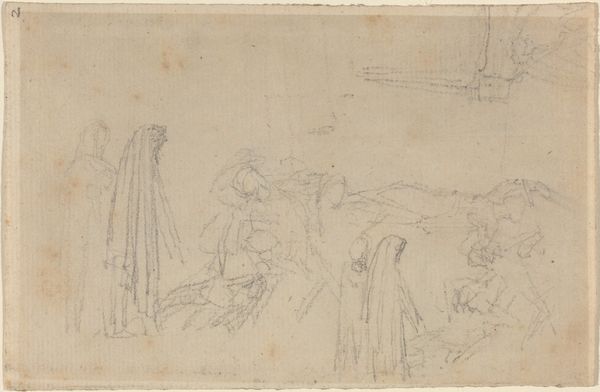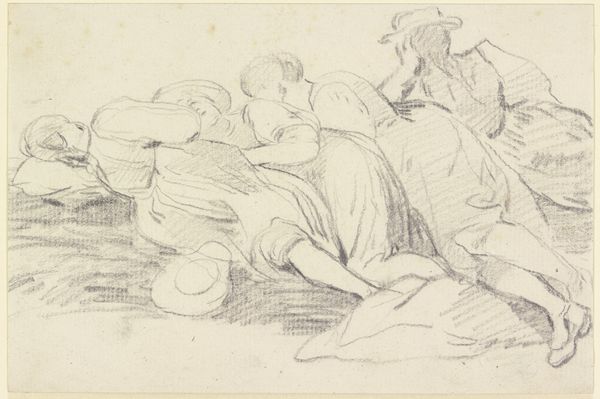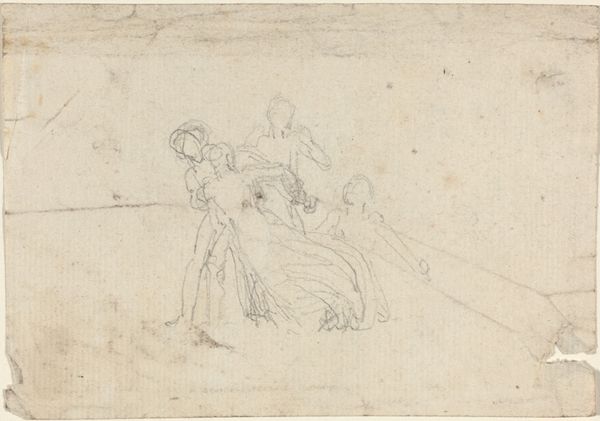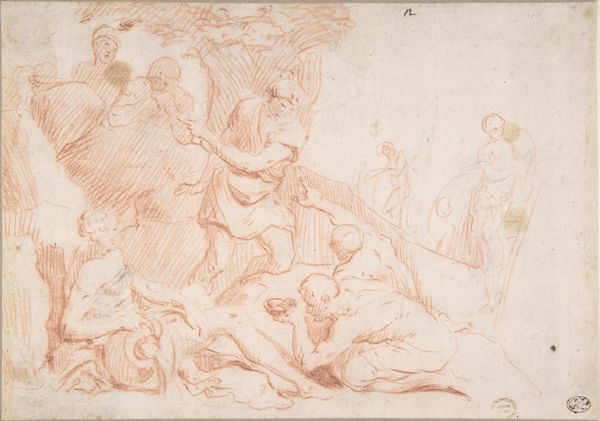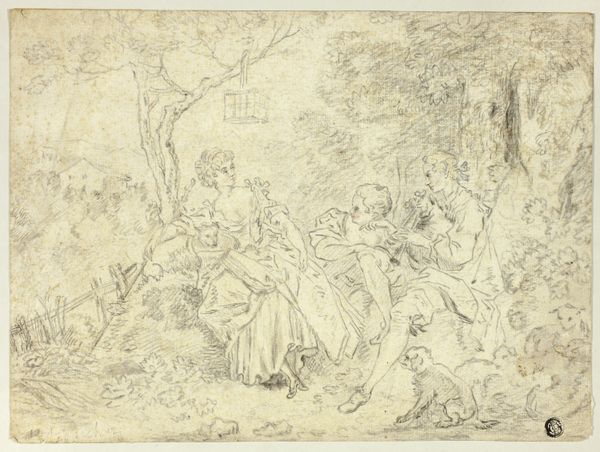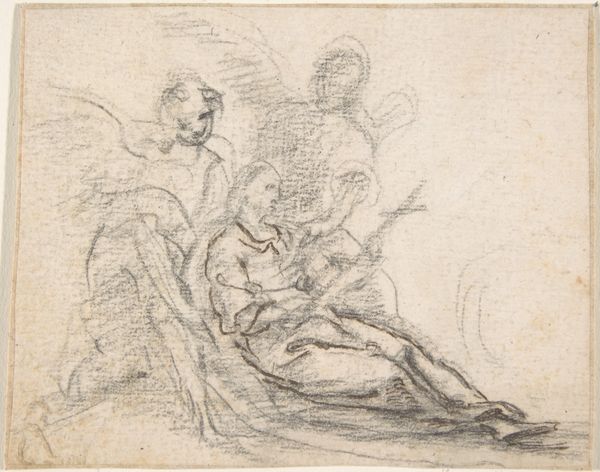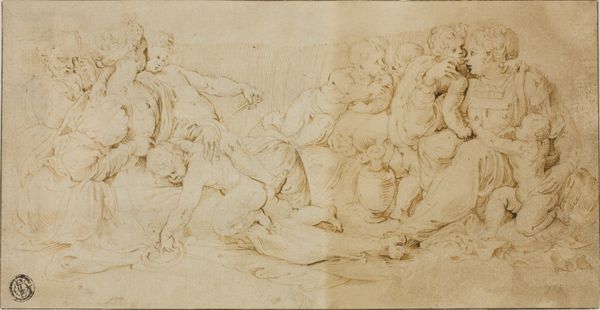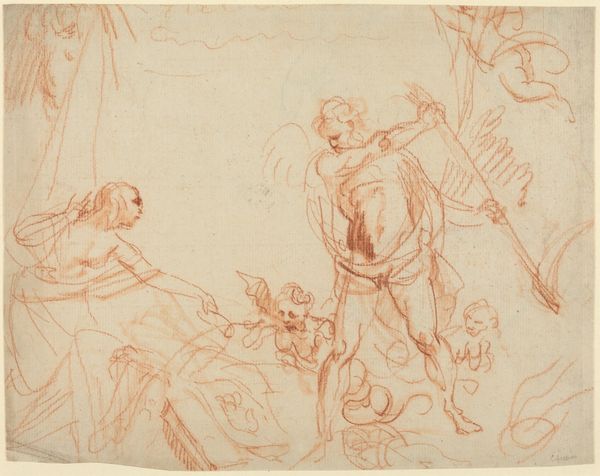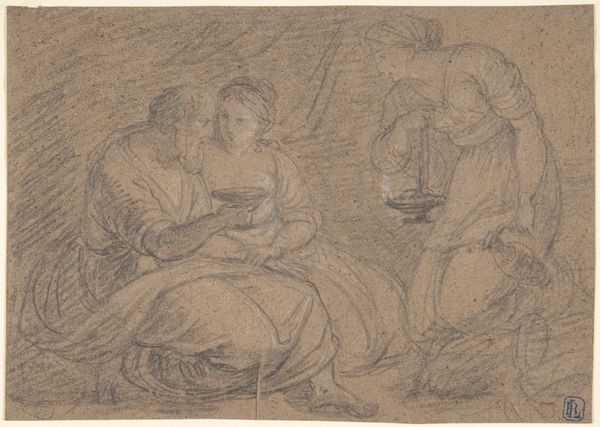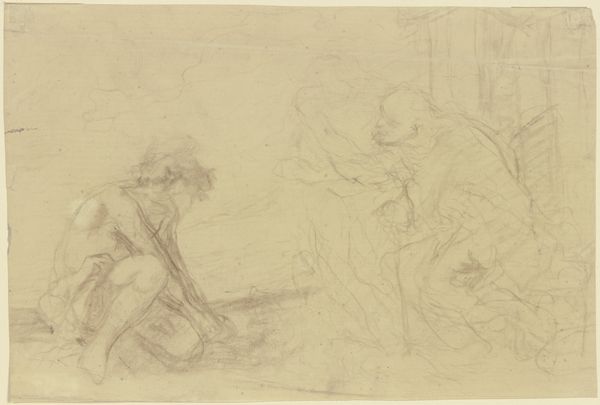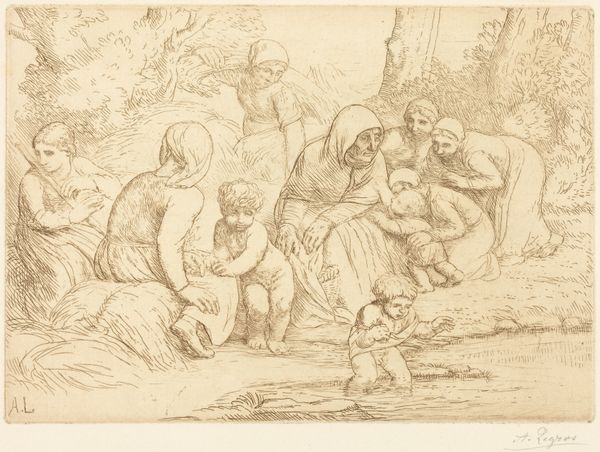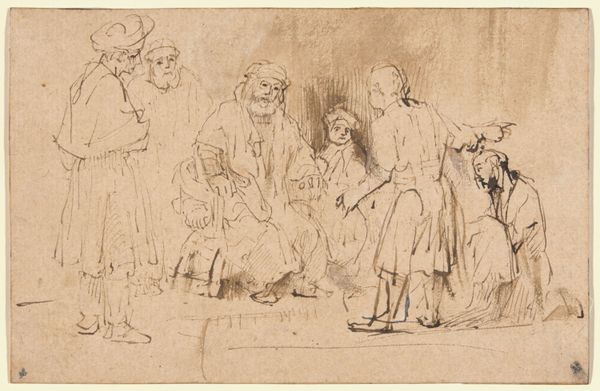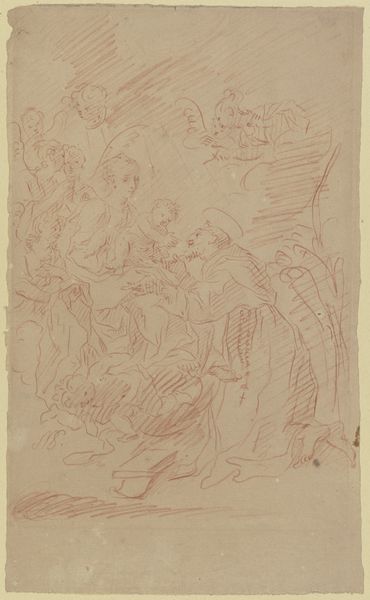
drawing
#
drawing
#
baroque
#
figuration
#
line
#
history-painting
#
italian-renaissance
Dimensions: 102 mm (height) x 239 mm (width) (bladmaal)
Curator: Immediately, there's something intriguing about the raw energy captured in this reddish-brown line drawing. It feels both intimate and monumental. Editor: I agree; that urgency emanates even through the fairly conventional history painting. I find myself focusing on who is centered, and why. Curator: You're right. Allow me to offer some context: what we’re observing is "The Birth of Pindar" by Giuseppe Bartolomeo Chiari, probably done between 1654 and 1727. Chiari was active during the Italian Renaissance, of course. Here, in these simple lines, we glimpse Pindar's auspicious beginning, with buzzing figures attending this symbolic event. Editor: Symbolic is definitely key here. Consider the figures’ placement – especially that figure stage right with an apparent infant or toddler trying to take center stage; what are we meant to feel as we consider what they represent, juxtaposed against a cultural obsession with virility and masculine intellect? What assumptions are we expected to accept? Curator: Exactly! This drawing shows Chiari's fluency in conveying dramatic narratives via classical imagery. He leans heavily on symbols – laurel wreaths suggesting future poetic accomplishments, gestures communicating prophecies and blessings... the conventional emblems of triumphant or historically significant figures. Editor: Emblems that create continuity. I notice the red chalk…a Baroque artist deploying an Italian Renaissance drawing style. It raises questions of how the art of antiquity gets resurrected at particular historical junctures. And, importantly, *who* is doing the resurrecting…and for what specific cultural or even political ends. I love that so many eras seem collapsed into this piece. Curator: Well, Chiari understood the importance of cultural memory and visual representation as cultural propaganda. The art movements create visual signifiers we automatically respond to—we recognize, even unconsciously, and replicate and disseminate across eras. Editor: Yes, and considering the social issues surrounding art's circulation even then helps unlock this work. Thank you. This has encouraged me to reconsider this drawing through multiple angles. Curator: For me, this discussion validates art's enduring power to activate dialogues. Hopefully, listeners have enjoyed joining this analysis.
Comments
statensmuseumforkunst almost 2 years ago
⋮
Squaring is a common technique used by artists to transfer a motif from a sketch to an actual artwork. By drawing a grid over the sketch, the motif can be copied section by section onto a canvas, wall, or larger sheet of paper with a corresponding grid. The method ensures the accurate copying of composition, perspective and details from the original sketch. Squaring can also be used in the perspective and scaling of a motif. Using the lines of a perspective grid, the size of an individual figure can be adjusted if, for example, it is to be moved further back in a composition and still be to scale. Here the back of the drawing is squared. This indicates that the artist wanted the drawing of ‘virtue and vice’ on the front to be laterally reversed.
Join the conversation
Join millions of artists and users on Artera today and experience the ultimate creative platform.
